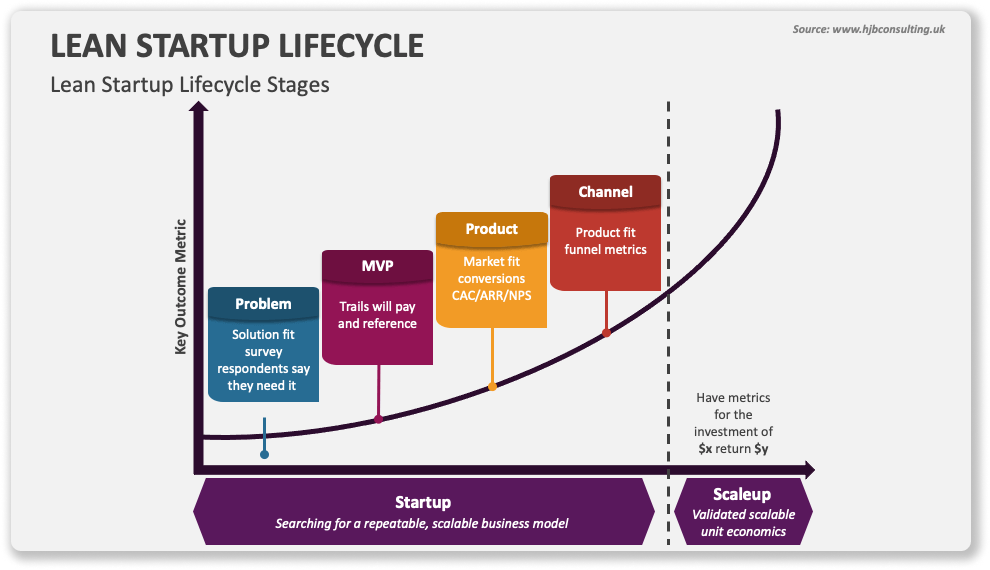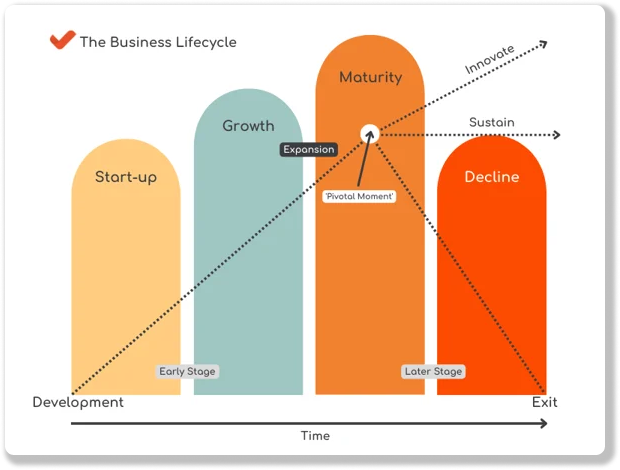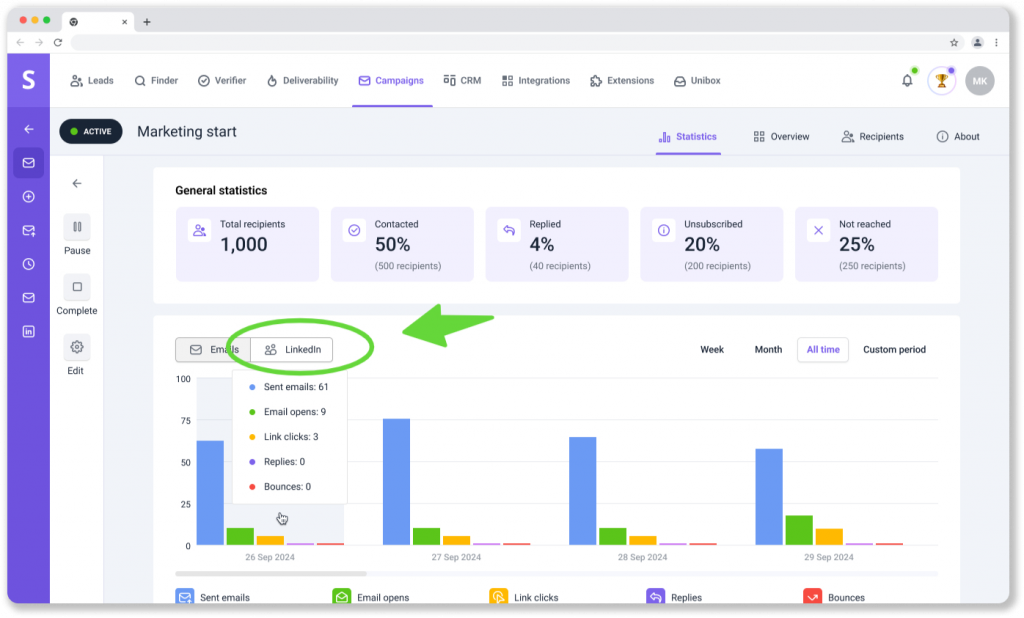Business growth
A business is somewhat similar to a living organism. Business growth is comparable to infancy, childhood, adulthood, and maturity, where each new stage is marked by accomplishments, gaining experience, and achieving the goals set.
Business growth is vital for a company’s well-being as it opens possibilities to attract investment and talented professionals and serves as a primary indicator of a company’s success.
For many, the rapid growth of some businesses in recent years (especially tech companies) remains a mystery: is it luck, magic, or some special secret?
In this glossary entry, we intend to unveil the answer to this question. We will help you better understand what business growth is and why it’s so important to consider implementing modern business growth strategies right from the start (we’ll dwell on some of them in more detail later on).
What is business growth: definition
There’s no single definition of what business growth is. First of all, it isn’t measurable in one dimension. Instead, a whole range of characteristics needs to be taken into account when speaking about a growing business, including:
- Sales
- Revenue
- Company value
- Market share
- Number of customers
- Number of employees and more.
When a business starts to expand in one or several of the above directions, we can say that it’s growing. Furthermore, business growth can take place even when one of the points shows an increase while another decreases.
For example, a company can see its revenue growth because the existing clients are buying more, while there’s a decrease in its customer base. (However, if we talk about SaaS firms, we need to emphasize that growing a customer base is vital since they need to ensure a steady stream of targeted traffic to their services.)
All of these make defining business growth as a concept quite complicated. Therefore, the owners wishing to grow their business should look at their goals first to establish the growth points they find most appropriate to generate more profit and expand.
Business lifecycle stages
As we’ve already mentioned, a business resembles a living organism, and it has its lifecycle with certain development milestones. A startup goes through a business lifecycle that may include 5 stages, as in the picture below:

This business lifecycle model was developed by researchers Neil C. Churchill and Virginia L. Lewis back in the 1980s, and it was primarily relevant to small and growing businesses.
Some other sources promote a more modern version of the business lifecycle model, which includes 4 stages: startup, growth, maturity, and renewal/decline. As we live in a rapidly changing world, the more up-to-date model seems more appropriate.

Let’s see what challenges business owners go through at each stage and what strategies should be used to keep your business afloat and make it prosper.
1. Startup stage
As soon as an idea of a business comes to your mind and you’ve raised enough capital and taken steps to implement it, the startup stage begins. Some businesses occupy this stage for years, struggling to stay alive and seeking their ideal niche market.
Meanwhile, to ensure business viability, you shouldn’t sit and wait for favorable external circumstances. Instead, make every effort to continue developing your product or service, build processes, create a brand positioning strategy, work out a marketing plan, and find new customers.
The latter is becoming easier in recent years with the emergence of lead generation tools like Snov.io that help automate finding leads and converting them into customers.

Strategy tips
At this stage, which is usually turbulent and chaotic, the best strategy for a business is to achieve the market acceptance of your business idea, correct your product or service design following your customers’ needs, secure a positive cash flow, and start turning a profit.
According to the latest stats, 10% of startups don’t survive the first year. The rest successfully pass the survival test and go to the next level — the buildup (growth) stage.
2. Growth stage
Sometimes, favorable circumstances may arise that can take a startup to the wave’s crest. It has happened with many tech companies that provide services for working or learning remotely. The finest hour of such firms came with the Covid-19 pandemic outburst when the need for such products increased exponentially.
The rapidly growing customer base is the main goal and critical indicator of your business entering the second stage of business growth.
However, many entrepreneurs are reluctant to grow. Scaling a business may seem risky, and many business owners fear being unable to reach new heights and losing the current results. So, a lot of them encounter an inner conflict between doubts and the desire to scale their business, which takes a lot of time and effort.
To scale a business cost-effectively, you need a smooth strategy, which you can craft using the tips below.
Strategy tips
Identifying key areas that need to be optimized is crucial at this stage. These are often sales, customer service, finance, and human resources, and it makes sense to use automation for most of these processes. Simple CRM systems focused on small teams and sales analytics should become your best friends. For example, you can use solutions such as Snov.io, Hubspot, or Zoho to ramp up interactions with your customers.
These solutions help keep all your customer data arranged in a well-structured manner, align sales and marketing processes, track your team performance, and much more.
And it would help if you finally said goodbye to endless chats and notebooks so as not to miss a big deal in the flood of uncontrolled communication.
3. Maturity stage
The maturity stage is usually marked by measurable year-to-year business growth. The most common characteristics of this stage are consolidation and consistency of systems and processes, product diversification, and geographical recognition.
This is when many businesses try to tap into other markets, increase distribution channels, and reach out to different consumer bases.
The expansion to other markets can involve merging with or acquiring another business. And here, new challenges arise, connected with the increased financial strain that may impact business profitability.
Strategy tips
At this point, business owners and management teams should consider diversification strategies and hire, train, and manage more qualified staff to meet the needs of an ever-changing world and customers with new ideas and products. Otherwise, stagnation is inevitable, which may lead your company to the final line.
4. Renewal/decline stage
Usually, owners whose businesses are in decline see the market as relatively stable and miss the change signals. When a company becomes too comfortable and relaxed, it stops searching for new ways to create value.
If this happens, and the company can’t adapt to the changing economic and social landscape needs, it’s prone to a gradual decline. Interestingly, businesses don’t start investing in digital transformation, people, or marketing until they are already in a state of decay. But if they do, their company can enter a new positive phase — revitalization.
So, embrace challenges as they arise and move forward!
Strategy tips
If a company wants to survive and pave its way to renewal, the primary strategy at the final business growth stage should be to step out of the comfort zone, take action, and start looking for ways to innovate.
To sum it up
The business growth lifecycle should be on your mind when you set up a company and want it to be a success in the long run. Therefore, from the first days of your startup, it’s vital to develop strategies for each stage of business growth, never relax, follow global and local trends, and implement new tech solutions, preferably earlier than competitors.
Your business may be now at a stage where you need to automate many of your business processes and get your sales team up and running. Snov.io is here for you!

















